|
Text taken with the permission of the author from "In the Gallery of the Night", Chapter 1 of The Committee of Sleep: How Artists, Scientists, and Athletes Use Dreams for Creative Problem-Solving--And How You Can, Too, ©2001 by Deirdre Barrett.
• In the Gallery of the Night •
Born in South Carolina during the Depression, Jasper Johns’ artistic aspirations led him to New York where he painted for several years without finding a unique voice. In 1954, he resolved to “stop becoming and be an artist.” His inspiration was a dream in which he saw himself painting a large flag, and the next day he began exactly that project.
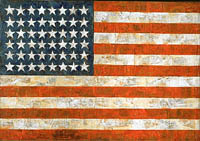 This became “Flag” and a lengthy series of flag pictures followed which established Johns as a major artist. His work continued with other simple, bold paintings that highlighted the design artistry of commonplace objects. He disavowed the paintings that preceded “Flag”--destroying those still in his possession and purchasing and shredding any which came to his attention later. “Since he has never shown anything drawn before this,” wrote one biographer, “the extraordinary initial impact of the image and the authority with which it is painted give the impression of a finished artist suddenly sprung from nowhere.”
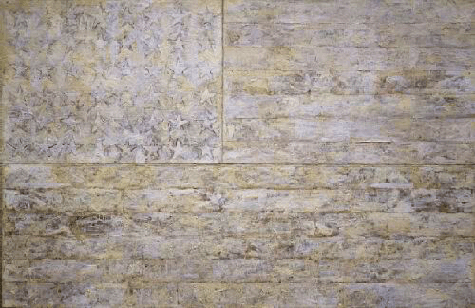 Johns later told an interviewer, “I have not dreamed of any other painting. I must be grateful for such a dream!” He laughed. “The unconscious thought was accepted by the conscious gratefully.”
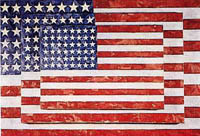
Dreams have played a role in visual art since man began to represent the world. The astonishing images of the night have always inspired artists. A bird-staff and other fantastic elements appear on the cave walls of Lascaux, France. This earliest known human art, produced between 40,000_ to 10,000 BC, caused Pablo Picasso to exclaim, "We have invented nothing!" The Lascaux paintings are believed to represent prehistoric dreams.
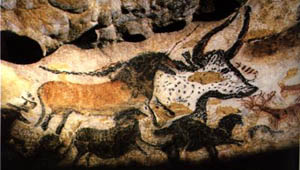
Scholars know more about the strikingly similar cave art of California’s Ojai Valley, or “Valley of the Moon.” The earliest date to 1000 AD, but legends associated with them survived when missionaries arrived in the late 1700's. These rock paintings were done by the 'atiswinic--a type of shaman, literally meaning “dreamer” or “having a dream.” The 'atiswinic drew fantastic animals and horned anthropomorphs set against geometric grids. We have no texts for most of the paintings and can’t know exactly which ones are dreams. But a few were told to the missionaries as dream accounts. One of these depicts the nose of a Coyote growing after he chased girls around begging for a kiss. A second shows a man capturing the retreating sun with a stick. In yet another, a swordfish tosses a whale around.
Other tribes around the world routinely used dreams as a basis for visual arts. These include the Chippewa of North America whose dream images determined the patterns of their banners and beadwork, and the Saroa of India who painted their dreams on the walls of houses.
Australian aborigines have long depicted their “dreamtime” with distinctive dot paintings on bark.
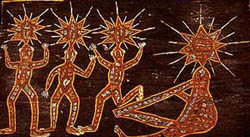
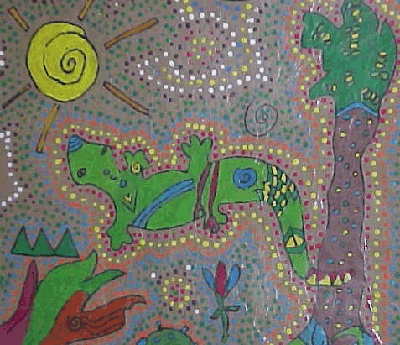
In Europe, there was no mandate for dream art, but artists nevertheless often portrayed nighttime visions. When religious art was favored--and the Church the main patron--painters commonly depicted the great dreams of the Bible. The scriptures dictated the content--the dreams of Jacob, Mary, and Pharaoh were favorites. But artists conveyed the state of dreaming according to their own nocturnal world. Figures faded into mist for one, hung suspended in midair for another.
Some painted their own dreams directly. German artist Albrecht Durer’s 1525 watercolor of a savage storm bears the following inscription:
"I saw this image in my sleep, how many great waters poured from heaven. . . drowning the whole land.. . . The deluge fell with such frightening swiftness, wind, and roaring that when I awoke, my whole body trembled; for a long while I could not come to myself. So when I arose in the morning, I painted what I had seen."
|
